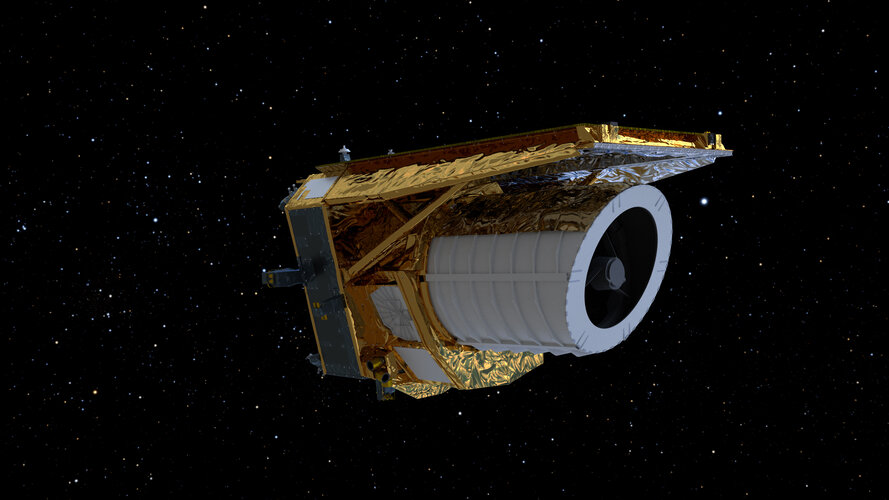9 July. Release of high-gain antenna
The Euclid operation team sent the command to release the K-band high-gain antenna, part of the spacecraft’s deep-space communications system. This antenna will be used to send more than 100 GB of compressed data down from the spacecraft to a large antenna in ESA’s deep-space communication network Estrack, daily.
Euclid is now the biggest transmitter of data (in terms of data rate of about 74 Mbps) from trans-lunar space. This is around 2–3 times the rates used by the James Webb Space Telescope which held the trophy so far.
With this critical operation successfully executed, Euclid is getting ready to open its eyes by switching on the focal-plane detectors of the two scientific instruments.
6 July. Wake up NISP
The wheel mechanisms inside the NISP instrument were activated for the first time. Engineers received telemetry from the spacecraft about the accurate positions of the wheels, and commanded them to rotate to the desired position.
The spacecraft remained slightly titled towards the Sun to allow some sunlight to enter the telescope tube without illuminating directly its primary mirror (Solar Aspect Angle between 51–54 degrees). This procedure warms up the telescope interiors and ensure that any trace of ice evaporates away. Temperatures and electric-power levels are nominal.



